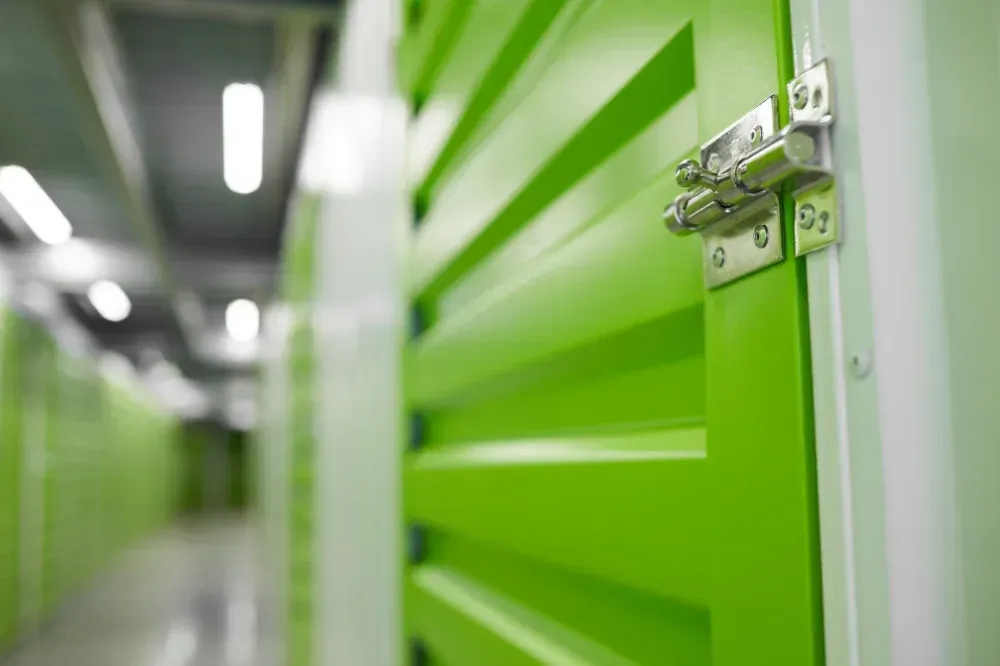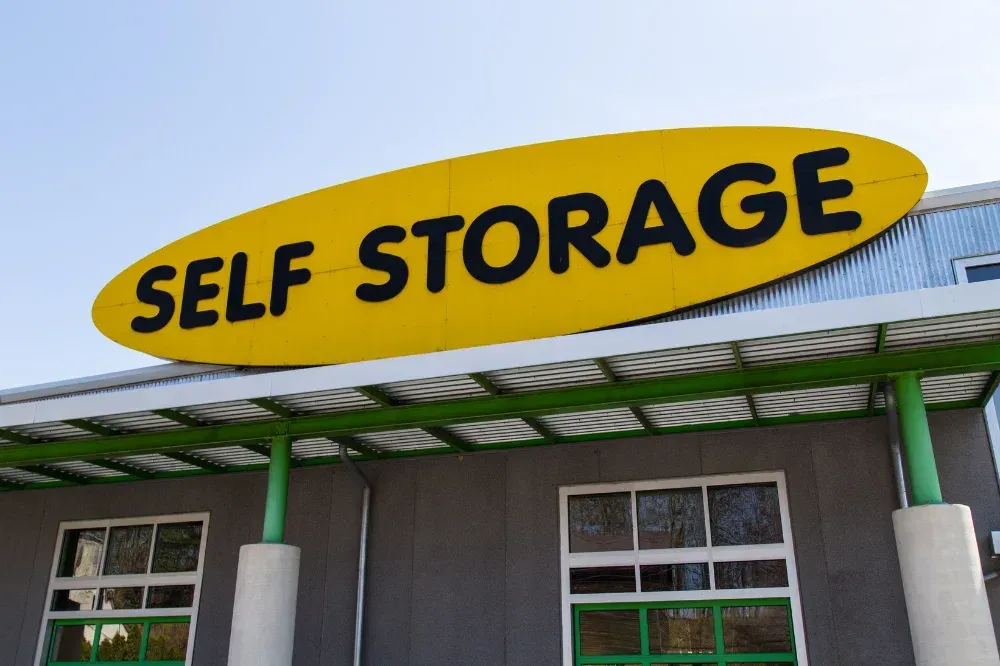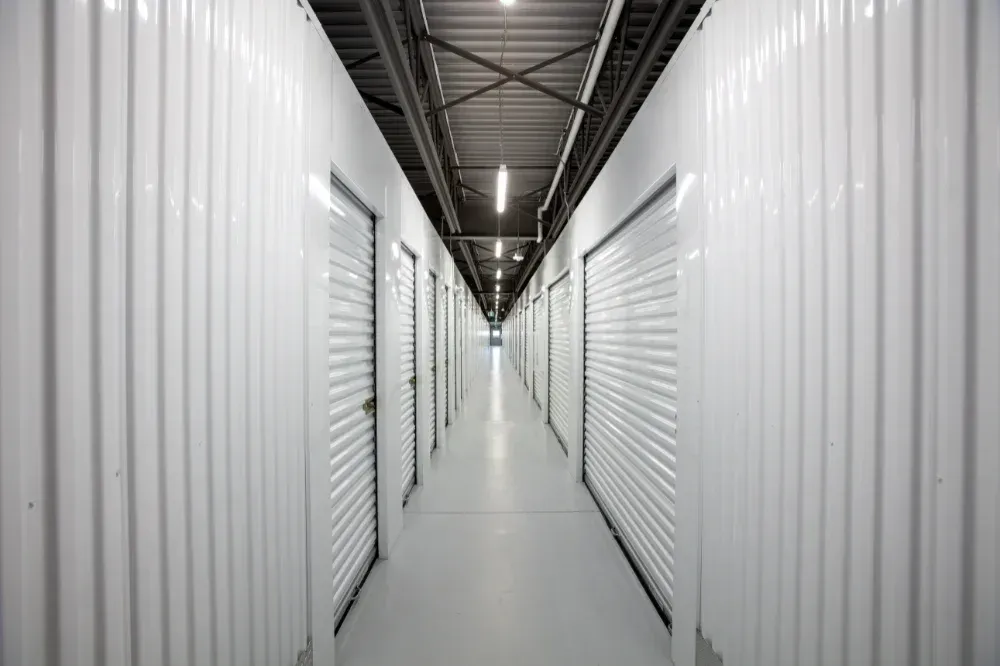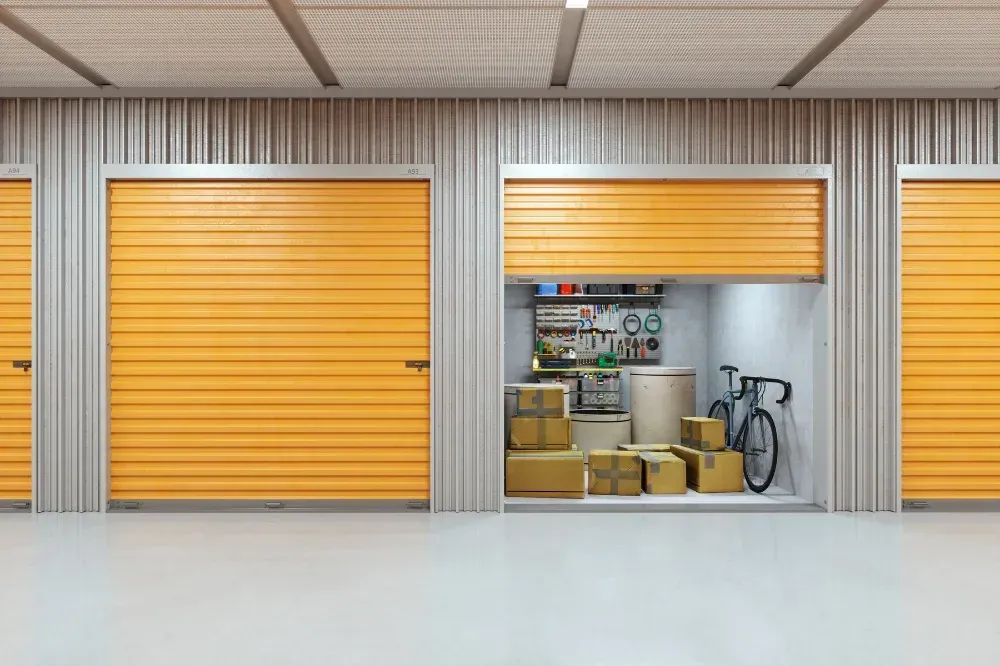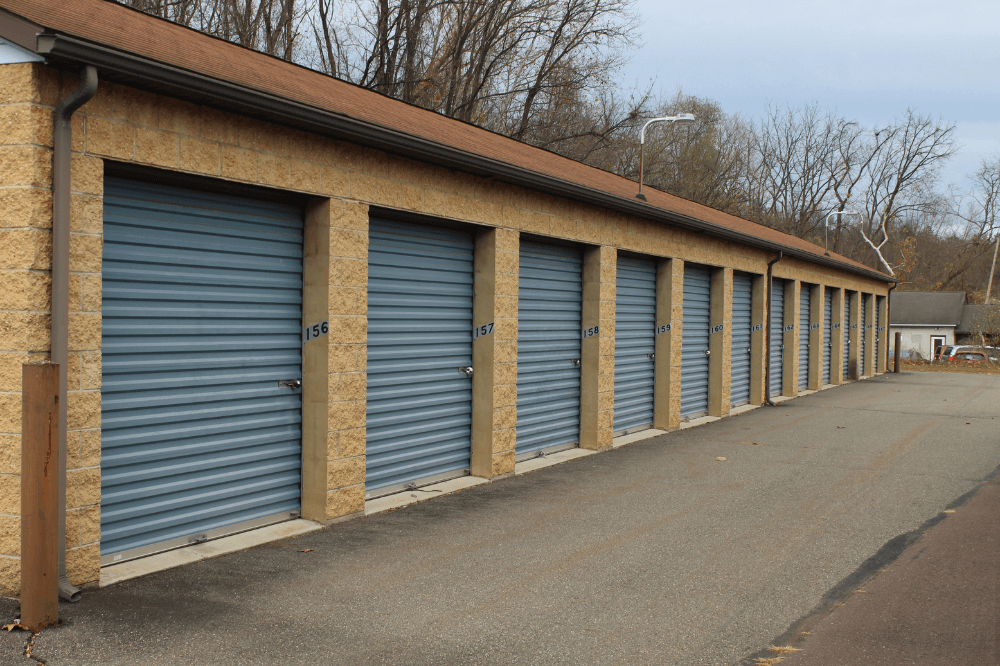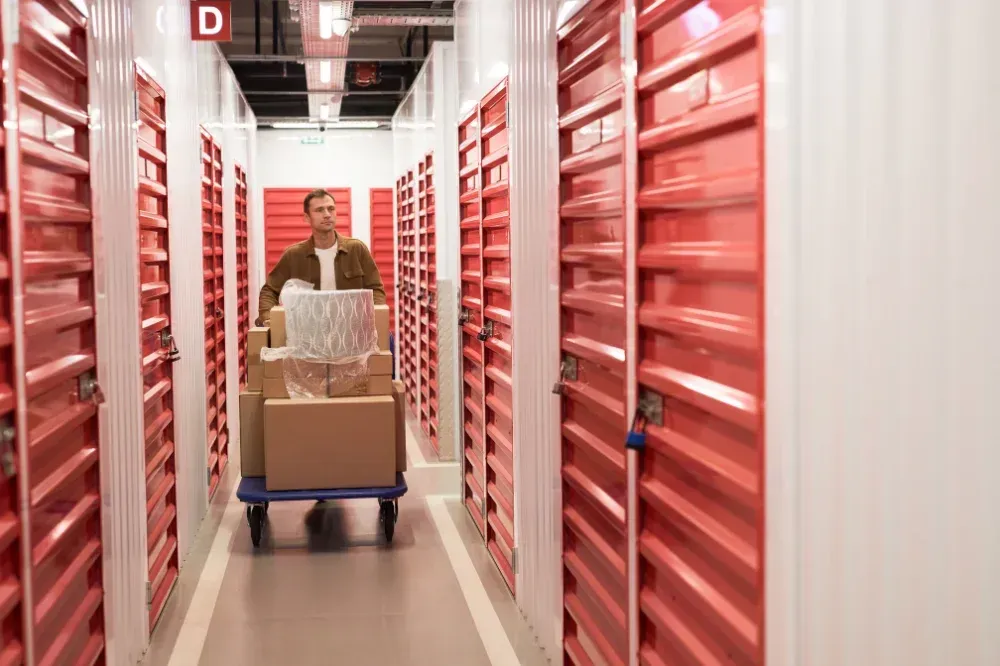How to Organize Your Storage Unit for Easy Access
How to Organize Your Storage Unit for Easy Access
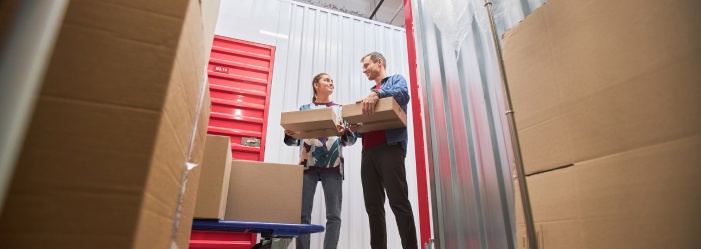
Renting a storage unit can be a great way to free up space at home, but without proper organization, it can quickly become a cluttered mess. Taking the time to organize your storage unit not only saves you frustration but also makes it easier to find and retrieve items when needed.
Why Organizing Your Storage Unit Matters
A well-organized storage unit prevents unnecessary stress, reduces the risk of damage to your belongings, and helps you make the most of the available space. Without proper organization, you might waste time digging through piles of boxes, risk misplacing important items, or even end up paying for more storage than you actually need.
The Benefits of an Accessible Storage Unit
An efficiently arranged storage unit offers multiple benefits:
- Saves time – Quickly locate and retrieve what you need.
- Maximizes space – Store more items without overcrowding.
- Reduces damage risk – Protect fragile and valuable belongings.
- Enhances safety – Prevents hazards caused by unstable stacks or blocked pathways.
Choosing the Right Storage Unit
Before you start organizing, it’s essential to choose the right storage unit to meet your needs.
Understanding Your Storage Needs
Assess what you’ll be storing and how often you’ll need access to certain items. Are you storing seasonal decorations, furniture, business inventory, or important documents? Understanding your specific needs will help you choose the most suitable unit.
Selecting the Right Size
Storage units come in various sizes, from small lockers to large garage-sized spaces. If you have only a few boxes, a smaller unit will suffice, but if you’re storing furniture or business supplies, you may need a larger space. A good rule of thumb is to create an inventory list and estimate the amount of space required before renting a unit.
Climate-Controlled vs. Standard Units
If you’re storing items that are sensitive to temperature and humidity—such as electronics, documents, or antiques—a climate-controlled unit may be the best choice. These units help prevent moisture damage, warping, and mold growth. For general household items, a standard storage unit is usually sufficient.
Planning Your Storage Layout
Once you’ve chosen your unit, planning the layout will ensure easy access and efficient use of space.
Creating a Layout Map
Sketch a simple layout of where you plan to place different items. Keep frequently accessed items near the front and less-needed items towards the back. This simple step will save you time in the long run.
Grouping Items by Category
Sort items into categories before placing them in the unit. Store similar items together, such as holiday decorations, kitchen appliances, or office supplies. Clearly labeling boxes will make it easier to locate what you need later.
Leaving an Access Path
One of the most overlooked aspects of storage unit organization is leaving a clear pathway. Make sure to leave enough space between boxes and furniture so you can navigate the unit without having to move everything around. A central aisle will allow you to access items at the back without hassle.
By following these steps, you’ll create an organized, efficient, and accessible storage unit, making it much easier to retrieve your belongings whenever needed.
Essential Storage Supplies
Having the right storage supplies can make a significant difference in keeping your unit organized and protecting your belongings. Here are the key supplies you should consider:
Sturdy Boxes and Bins
Invest in durable, high-quality boxes or plastic storage bins to keep your items safe. Plastic bins are especially useful for protecting against moisture and dust, while sturdy cardboard boxes are a cost-effective option for general storage.
Shelving Units
Adding freestanding shelving units can help you make better use of vertical space while keeping frequently used items easily accessible. Metal or heavy-duty plastic shelves are ideal for holding heavier items without sagging.
Labels and Markers
Clear labeling is essential for an organized storage unit. Use permanent markers, pre-printed labels, or label makers to ensure each box is properly identified. Consider listing the contents on each label for quick reference.
Furniture Covers and Plastic Wrap
If you’re storing furniture or delicate items, protective covers are a must. Use furniture blankets, plastic wrap, or mattress bags to shield against dust, scratches, and moisture. For added protection, use bubble wrap for fragile items like glassware and electronics.
Packing and Labeling for Efficiency
A well-packed and clearly labeled storage unit will save you time and frustration when retrieving items.
The Importance of Clear Labeling
Labeling your boxes clearly ensures that you can easily identify contents without opening each one. Use large, bold lettering and place labels on multiple sides of each box for visibility from different angles.
Using Color-Coded Systems
For even better organization, consider color-coding your labels based on category. For example:
- Red for holiday decorations
- Blue for office supplies
- Green for household items
- Yellow for kitchenware
This method makes it easy to spot the right items at a glance.
Keeping an Inventory List
Maintaining an inventory list can help you track what’s in your storage unit. This can be a simple notebook list or a digital spreadsheet, detailing box numbers, contents, and their location within the unit. Some storage apps even allow you to take photos and log items digitally.
Maximizing Vertical Space
To make the most of your storage unit, utilize vertical space effectively.
Utilizing Shelving Units
Installing sturdy shelving allows you to store items at different heights, reducing clutter on the floor and improving accessibility. Place frequently used items at waist level for easy access
Stacking Boxes Strategically
When stacking boxes, use a brick-layered pattern rather than stacking in a single column. This improves stability and prevents boxes from toppling over. Ensure heavier boxes are placed at the bottom, with lighter or fragile items on top.
Storing Heavier Items at the Bottom
Placing heavy furniture, books, and bulky appliances at the base prevents lighter boxes from being crushed. If stacking large furniture pieces, disassemble them when possible to save space and store components vertically against the walls.
By using these techniques, you’ll create a well-organized and space-efficient storage unit, making it easy to find and retrieve items whenever needed.
Storing Fragile and Valuable Items
Protecting fragile and valuable belongings requires special care to prevent damage while in storage.
Properly Wrapping Fragile Items
Use bubble wrap, packing paper, or foam padding to protect delicate items like glassware, ceramics, and electronics. For extra protection:
- Wrap items individually and place them in sturdy, cushioned boxes.
- Fill empty spaces with packing peanuts or crumpled paper to prevent movement.
- Mark boxes as “FRAGILE” on multiple sides to ensure careful handling.
Using Climate-Controlled Storage for Valuables
If you’re storing electronics, artwork, antiques, or musical instruments, consider renting a climate-controlled storage unit. These units maintain a stable temperature and humidity level, preventing warping, mold, or deterioration of sensitive materials.
Keeping Important Documents Safe
For storing important documents such as passports, birth certificates, legal papers, or business records, use:
Waterproof and fireproof document boxes for protection against accidents.
Filing cabinets or labeled folders to keep papers organized and easy to retrieve.
Digital backups (scanned copies stored securely online) for added security.
Seasonal and Frequently Used Items
Some items, like holiday decorations or summer camping gear, are used only at certain times of the year. Proper organization ensures they are easy to access when needed.
Storing Seasonal Items Efficiently
To keep seasonal items in order:
- Use clear plastic bins for easy identification.
- Label boxes with both the season and contents (e.g., “Winter – Holiday Lights” or “Summer – Beach Gear”).
- Stack bins with the current season’s items on top for easy switching.
Keeping Frequently Used Items Near the Entrance
Store frequently used items—such as tools, sports gear, or business inventory—near the front of the unit for quick access. Place them at waist level or on shelves instead of stacking them behind other boxes.
Creating an Easy Access System
A well-thought-out system ensures you can efficiently retrieve and replace items without hassle.
Implementing a First-In, First-Out Approach
If you frequently rotate stored items, use the first-in, first-out (FIFO) method:
- Place newer items behind older ones to ensure that older items get used first.
- This system works well for business inventory, seasonal clothing, or perishable supplies.
Keeping Walkways Clear
Always leave a clear path down the center of your unit so you can access items at the back without moving multiple boxes. Consider a U-shaped or L-shaped layout to maximize space while maintaining accessibility.
Utilizing Transparent Bins for Visibility
Using clear plastic bins instead of opaque boxes allows you to see contents without opening them. For extra organization, stack similar items together and use color-coded labels to differentiate between categories.
By following these organization strategies, your storage unit will remain tidy, efficient, and easy to navigate, saving you time and frustration in the long run.
Maintaining and Updating Your Storage Unit
Keeping your storage unit organized requires regular maintenance and updates to ensure everything remains accessible and in good condition.
Conducting Regular Check-Ins
Schedule periodic visits to your storage unit to:
- Check for signs of moisture, pests, or damage.
- Ensure boxes and bins are still properly labeled and intact.
- Verify that frequently used items remain easy to access.
Rotating Stored Items
For seasonal or perishable items, practice a rotation system:
- Move older items to the front to be used first.
- Place newly stored items toward the back to avoid clutter.
- Update labels and inventory lists as needed.
Reorganizing as Needed
Over time, your storage needs may change. Take the opportunity to:
- Rearrange shelves and boxes for better efficiency.
- Donate, sell, or discard items you no longer need.
- Optimize space by repacking items into smaller or more efficient containers.
Avoiding Common Storage Mistakes
Many people make simple mistakes that lead to disorganization, damage, or wasted space. Here’s how to avoid them:
Overpacking the Unit
Cramming too much into your storage space can:
- Make it difficult to find or access items.
- Increase the risk of boxes collapsing under pressure.
- Block airflow, leading to moisture buildup and mold.
Solution: Use shelving, stack wisely, and leave an access path to keep the unit organized.
Neglecting Proper Labeling
Without clear labels, finding specific items becomes a hassle. Avoid this by:
- Labeling all boxes clearly on multiple sides.
- Using color-coded systems to categorize belongings.
- Keeping an updated inventory list.
Ignoring Climate Considerations
Certain items, like electronics, artwork, or furniture, can suffer damage if not stored properly.
- Choose a climate-controlled unit for sensitive items.
- Wrap furniture and delicate materials in protective covers.
- Elevate boxes off the floor to prevent water damage.
Security Measures for Your Storage Unit
Protecting your stored belongings should be a priority. Follow these security measures to prevent theft and damage.
Choosing a Secure Facility
Before renting a storage unit, look for one that offers:
- 24/7 surveillance cameras and security personnel.
- Gated access with unique entry codes.
- Good lighting and alarm systems to deter theft.
Using Quality Locks
A strong lock adds an extra layer of protection. Consider:
- Disc locks or heavy-duty padlocks that are resistant to cutting or tampering.
- Combination locks for added convenience without keys.
Keeping a Record of Stored Items
- Maintain an inventory list with:
- Box numbers and their contents.
- Photos of high-value items for insurance purposes.
- A digital backup in case of loss or damage.
By following these maintenance and security practices, your storage unit will remain safe, organized, and easy to manage for years to come.
Moving Out of a Storage Unit
When it’s time to move out of your storage unit, proper planning and organization will make the process smoother and more efficient.
Planning Ahead for Retrieval
Before moving out, create a step-by-step plan to:
- Check your inventory list to ensure all items are accounted for.
- Prioritize large and heavy items for removal first.
- Bring necessary supplies, such as packing tape, boxes, and a dolly, to ease transport.
Cleaning and Disposing of Unwanted Items
Take this opportunity to declutter and downsize by:
- Donating, recycling, or selling items you no longer need.
- Properly disposing of damaged or expired items to avoid leaving unnecessary waste behind.
- Sweeping and wiping down the unit to leave it in good condition.
Ensuring Nothing Is Left Behind
Before handing over the unit:
- Double-check shelves, corners, and behind boxes for overlooked items.
- Inspect the unit under good lighting to make sure it’s completely empty.
- Return keys or access codes if required by the storage facility.
Conclusion
An organized storage unit saves time, stress, and effort. With a little planning, the right supplies, and regular maintenance, you can ensure your storage space remains accessible and efficient.
FAQs
- How often should I reorganize my storage unit?
Every six months is ideal to keep things in order. - What are the best storage bins to use?
Sturdy, stackable, and clear bins are best for visibility and durability. - How can I prevent pests in my storage unit?
Use pest repellents and avoid storing food items. - Can I store perishable items in a storage unit?
No, perishable items can attract pests and cause odors. - How do I maximize a small storage unit?
Use shelving, vertical space, and smart packing techniques.

